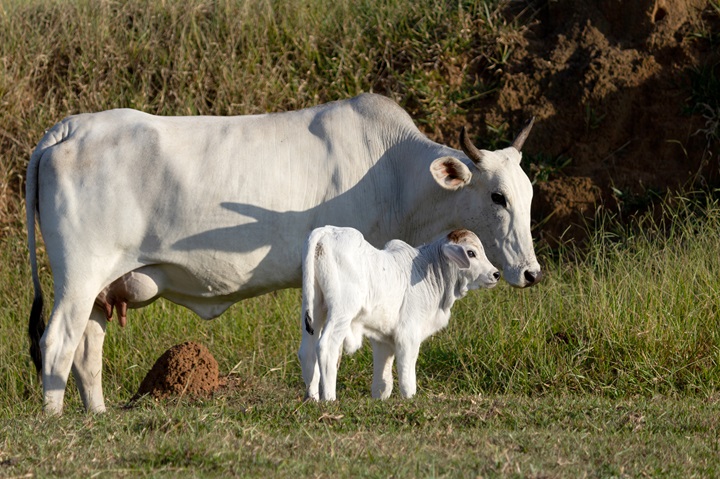
Ruminants
Calving in Cows: A Comprehensive Guide to Stages, Symptoms, and Treatment
Calving in cows is crucial in cattle management, influencing herd productivity and profitability. A successful calving process ensures healthy calves and minimizes complications for the cow. Understanding the stages of calving, recognizing signs of calving in cows, and knowing the appropriate calving in cow treatment strategies can significantly improve outcomes. This comprehensive guide covers everything from early symptoms to post-calving care, ensuring a smooth and safe birthing process for your herd.
Understanding Calving in Cows
Calving is the natural process of a cow giving birth to a calf. It is a critical stage in the reproductive cycle and requires proper management to ensure minimal stress for both the cow and the newborn. Proper nutrition, observation, and timely intervention play vital roles in achieving successful calving outcomes.
Signs of Calving in Cows
Recognizing the early signs of calving in cows allows farmers and veterinarians to prepare for a smooth delivery. The following are common indicators that a cow is approaching labour:
- Physical Changes
-
-
- Swollen and relaxed vulva
- Udder enlargement and milk let-down
- Softening of pelvic ligaments
- Mucous discharge from the vulva
-
- Behavioral Changes
-
- Restlessness and frequent lying down
- Reduced appetite
- Seeking isolation from the herd
- Increased tail movement and stretching
Monitoring these signs closely helps in determining when a cow is about to give birth and allows timely assistance if needed.
Stages of Calving in Cows
The calving process is divided into three distinct stages:
Stage 1: Preparation (Early Labor)
This stage begins with the cow showing calving in cow symptoms like discomfort, restlessness, and vulvar discharge. It can last anywhere between 2 to 6 hours. During this phase:
- The cervix dilates to allow the calf to pass through.
- The cow may exhibit frequent urination and mild contractions.
- She may separate herself from the herd and start nesting behavior.
Stage 2: Delivery of the Calf
This is the most critical stage and typically lasts 30 minutes to 2 hours in cows and 1 to 4 hours in heifers. Key events during this stage include:
- Strong and frequent uterine contractions.
- The water bag (amniotic sac) rupturing.
- The calf’s front legs and head appearing first (normal presentation).
- The cow actively pushing to expel the calf.
Assistance may be required if the calf is malpositioned, labor extends beyond expected duration, or the cow shows signs of extreme distress.
Stage 3: Expulsion of the Placenta
After the calf is delivered, the final stage involves the shedding of the placenta within 6 to 12 hours. A retained placenta can lead to infections and other complications, requiring veterinary attention.
Calving in Cow Treatment and Assistance
While most cows give birth naturally, some may need assistance. Calving in cow treatment varies depending on complications encountered during labor.
When to Assist?
- Prolonged labor lasting beyond 2 hours.
- Abnormal calf presentation (e.g., backward or sideways positioning).
- Excessive straining with no visible progress.
- Signs of distress such as heavy breathing, bellowing, or exhaustion.
Assisting in Calving
- Manual Intervention: Gently pulling the calf only when contractions occur, ensuring correct alignment.
- Lubrication: Applying a safe lubricant to reduce friction during delivery.
- Calving Jack Usage: In cases of difficult births, a calving jack can be used under veterinary guidance.
- Veterinary Assistance: If complications arise, such as a twisted uterus or a calf too large to pass, immediate veterinary help is necessary.
Post-Calving Care for the Cow and Calf
Proper post-calving care is essential for both the cow and the newborn calf to ensure a healthy start.
For the Calf:
- Ensure Breathing: Clear the calf’s airways and encourage breathing by rubbing with a clean towel.
- Umbilical Cord Care: Disinfect the umbilical cord with iodine to prevent infections.
- First Colostrum Feeding: The calf must receive colostrum within the first 2 hours for immunity and nutrition.
- Monitor for Weakness: Ensure the calf is standing and nursing within the first few hours.
For the Cow:
- Monitor Placenta Expulsion: If retained beyond 12 hours, seek veterinary assistance.
- Provide Fresh Water and Nutrients: The cow needs hydration and high-energy feed to recover from labor.
- Watch for Post-Calving Complications: Look for signs of milk fever, metritis, or mastitis.
- Reduce Stress: Keep the environment calm and clean to promote recovery.
Preventing Calving Complications
Preventive measures help minimize calving difficulties and improve overall herd health.
Nutritional Management
- Provide balanced diets rich in protein, vitamins, and minerals.
- Ensure adequate calcium and phosphorus levels to prevent milk fever.
- Avoid overfeeding to prevent dystocia (difficult birth due to oversized calves).
Proper Breeding Selection
- Choose sires with a history of easy calving to reduce dystocia risks.
- Avoid breeding heifers with bulls known for producing large calves.
Regular Health Checkups
- Conduct pregnancy monitoring and assess fetal position before calving.
- Vaccinate against diseases like bovine viral diarrhea (BVD) and leptospirosis.
- Monitor cows for metabolic disorders such as ketosis.
Understanding calving in cows and being well-prepared for the process ensures higher survival rates for both cows and calves. Recognizing the stages of calving, identifying signs of calving in cows, and implementing the right calving in cow treatment methods help in minimizing complications. Proper post-calving care and preventive measures further enhance herd productivity and animal welfare.
By closely monitoring pregnant cows, providing optimal nutrition, and intervening when necessary, farmers can promote successful calving outcomes and healthier livestock.













Add your comment